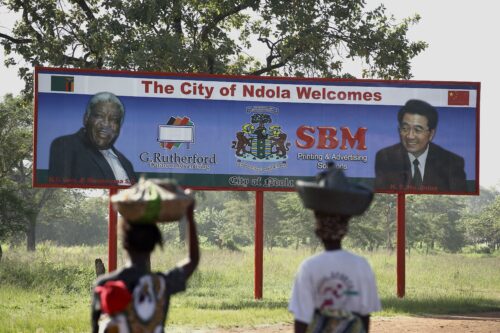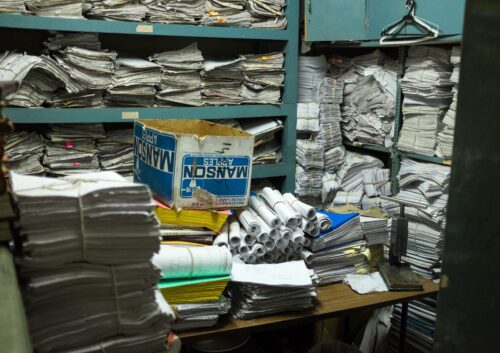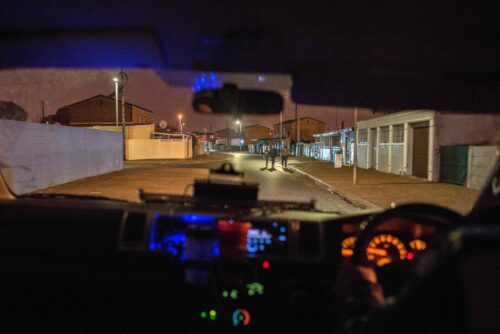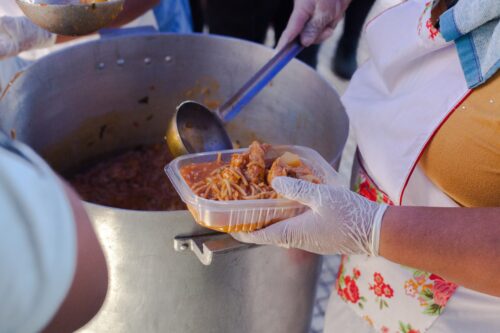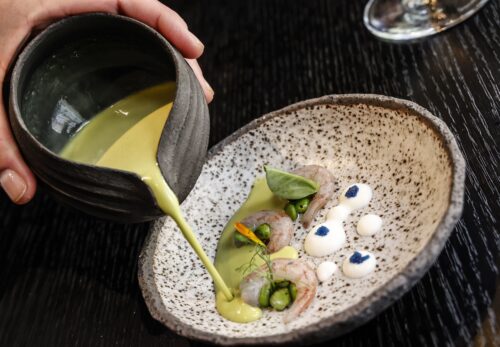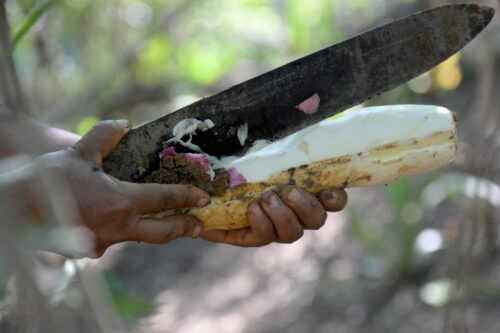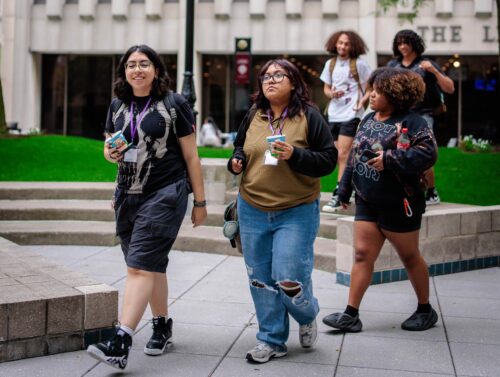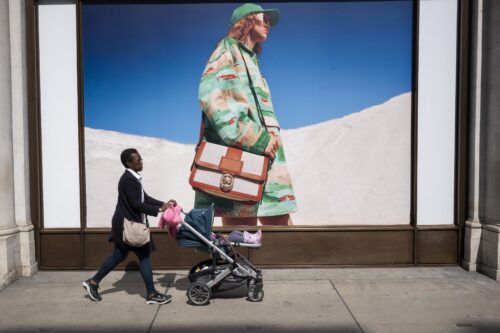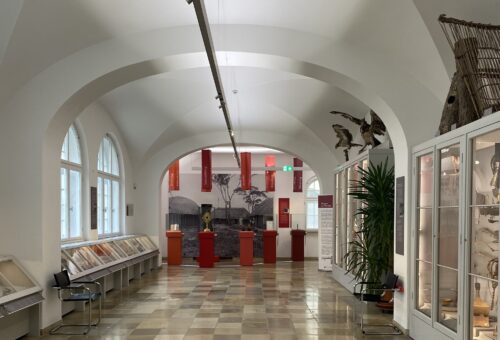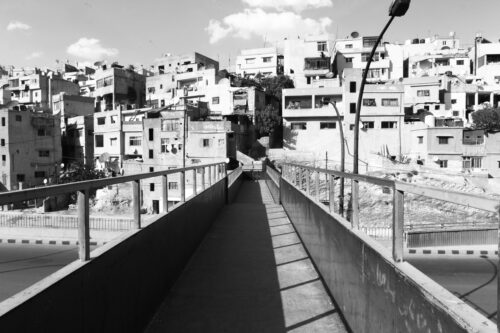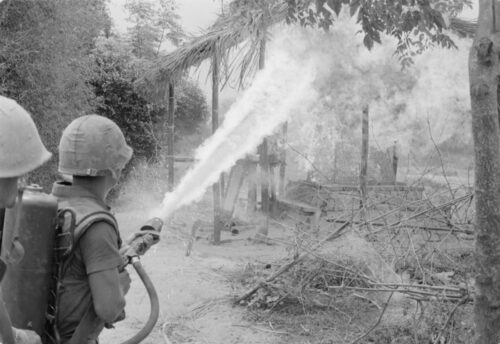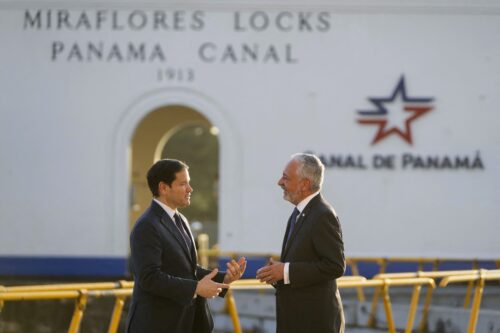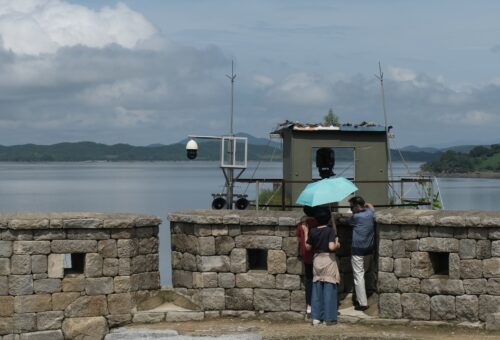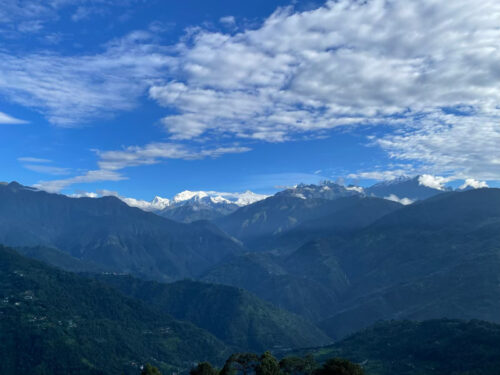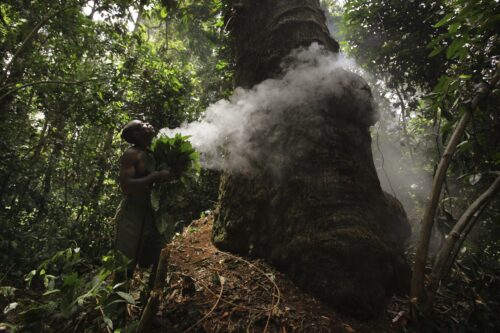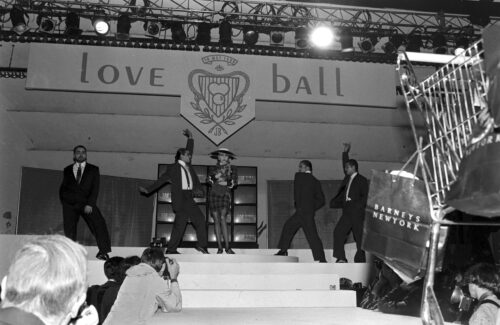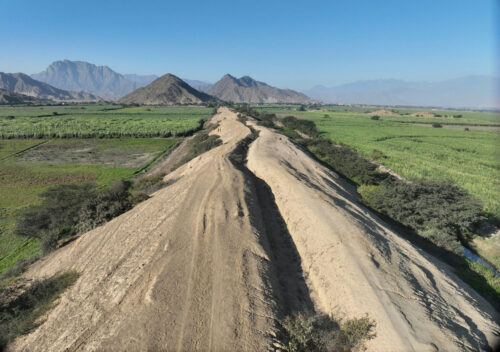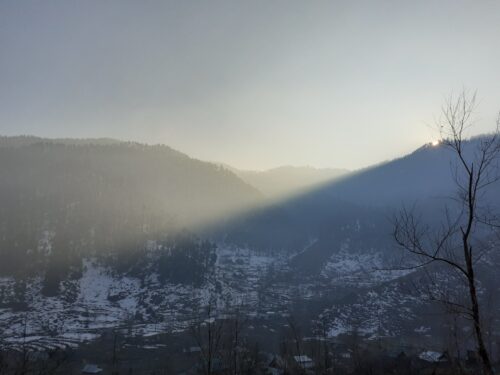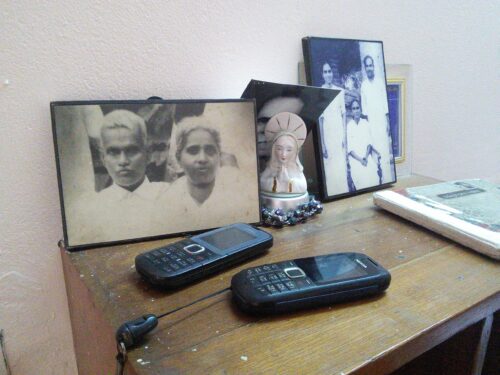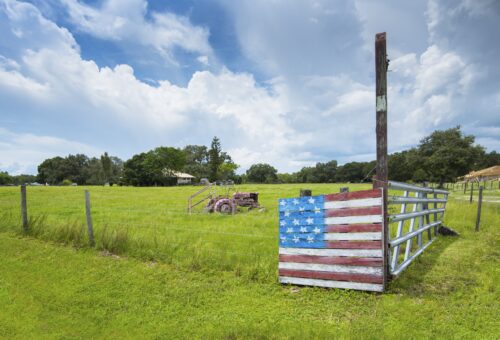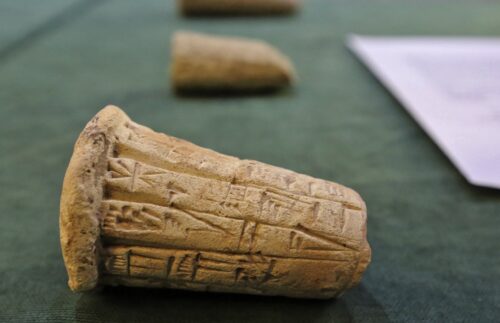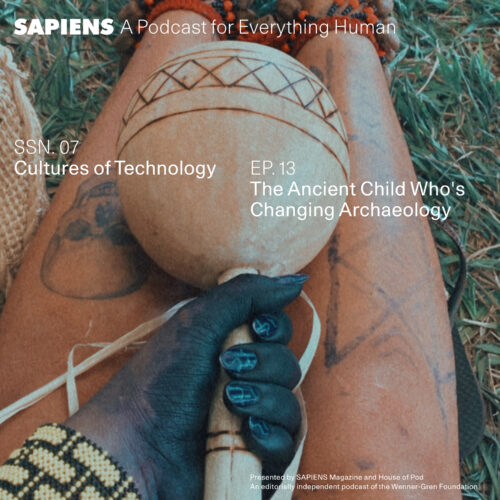Can museums and archaeology harm the dead?
An Indigenous archaeologist from Brazil challenges traditional approaches to studying human bones. Her work reveals how standard practices—such as assigning catalog numbers to ancient bodies—are violent and biased. As she encounters the remains of a 700-year-old child in a university museum, their stories intertwine, highlighting issues of ethics, coloniality, and ethnic erasure. This encounter prompts a discussion on how archaeology and museums can address historical wounds and counter the silencing of Indigenous histories.
Mariana Petry Cabral is a Brazilian archaeologist whose research interests focus on Indigenous archaeologies, collaborative practices, and how people produce and use historical knowledge to understand who they are. She received her Ph.D. from Universidade Federal do Pará (Brazil) and is a permanent professor of the department of anthropology and archaeology at the Universidade Federal de Minas Gerais (Brazil). She was a visiting scholar at Brown University in 2023 and is working on a project about the relevance of archaeological narratives about the past to imagine more inclusive and diverse futures.
Check out these related resources:
- “Finding Footprints Laid at the Dawn of Time”
- “Indigenous Cultures Have Archaeology Too”
- Museum of Natural History and Botanical Garden, UFMG
- “From Structures to Bodies and Beings: The Perishable Vestiges of Lapa do Caboclo, Diamantina, Minas Gerais”
- Follow the Indigenous archaeologist Bibi Nhatarâmiak on Instagram
SAPIENS: A Podcast for Everything Human is produced by House of Pod. The executive producers were Cat Jaffee and Chip Colwell. This season’s host was Eshe Lewis, who is the director of the SAPIENS Public Scholars Training Fellowship program. Dennis Funk was the audio editor and sound designer. Christine Weeber was the copy editor.
SAPIENS is an editorially independent magazine of the Wenner-Gren Foundation and the University of Chicago Press. SAPIENS: A Podcast for Everything Human is part of the American Anthropological Association Podcast Library.
This episode is part of the SAPIENS Public Scholars Training Fellowship program, which provides in-depth training for anthropologists in the craft of science communication and public scholarship, funded with the support of a three-year grant from the John Templeton Foundation.
An Ancient Child Who’s Changing Archaeology
[introductory music]
Voice 1: What makes us human?
Voice 2: A very beautiful day.
Voice 3: Little termite farm.
Voice 4: Things that create wonder.
Voice 5: Social media.
Voice 6: Forced migration.
Voice 1: What makes us human?
Voice 7: Stone tools.
Voice 8: A hydropower dam.
Voice 9: Pintura indígena.
Voice 10: Earthquakes and volcanoes.
Voice 11: Coming in from Mars.
Voice 12: The first cyborg.
Voice 1: Let’s find out. SAPIENS: A Podcast for Everything Human.
Eshe Lewis: Do you know where your ancestors’ remains are? Can you access them? Does someone care for them? And if so, how?
Today’s story is reported by Mariana Cabral, a Brazilian archaeologist who has been working with Indigenous peoples for 15 years. She is reexamining the way people treat ancestral remains housed in museums. And it all starts with one important encounter.
[rattling]
Mariana Cabral: I’m in the storage room of the Museum of Natural History and Botanical Garden at the Federal University of Minas Gerais in Brazil, where I teach archaeology.
And I’m not alone.
[singing]
Mariana: This is Bibi Nhatarâmiak Borum-Kren. She is an Indigenous archaeologist here in Brazil, and she’s grieving the burial of an Indigenous child, who passed away some 700 years ago.
I am recording Bibi and her relationship with this child because she’s the first person I’ve met who treats an archaeological burial this way. As an archaeologist, I have seen colleagues studying human bones for more than 20 years. But watching Bibi, I realize this is the first time I have seen someone build a relationship with the dead as a living person, not a lifeless, ancient body.
[singing in the background]
Bibi sings to this ancient child to offer a greeting. I stand beside her to ask for permission to tell this story. I am a White woman of European descent, but I came to learn from Indigenous and Afro-diasporic researchers to ask for permission from the ancient ones before telling their stories. This time, as I listened to Bibi, I felt something different. It wasn’t just that Bibi was asking for permission. It was as if she was greeting an old friend.
“Nossa, isso foi incrível, fiquei toda arrepiada.”
That’s me telling her that I felt goosebumps all over me. It was really amazing.
Bibi and I met in 2020. Bibi was accepted to a graduate program in archaeology at my university, and she’d invited me to supervise her work. In Brazil, Indigenous people make up less than 1 percent of the population, which means around 800,000 people. But there are fewer than 20 Indigenous archaeologists. I have been working with Indigenous archaeologists for 15 years, and in that time, I’ve only had two Indigenous students.
Bibi is the first Indigenous archaeologist in Brazil to pursue bioarchaeology, a specialty of archaeology that focuses on the study of the human body, which means working with dead people. Archaeologists study dead bodies all the time, and you might think it is no big deal. But what happens when these bodies are actually considered an ancestor? That’s what Bibi faces. And she’s tired of seeing Indigenous bodies treated as objects.
Bibi Nhatarâmiak Borum-kre: Nós não somos nada pra tá dentro de caixas. Nós não somos um nada pra sermos número, Nós somos pessoas e aquelas perguntas, aquelas que todo mundo faz, né? Da mesma forma que que um parente nosso é tratado desse jeito.
Voice-Over Translation: We are not nothing to be put inside boxes. We are not nothing to be labeled as a number. We are people. And the question that everyone asks is, “If it were your grandmother, your mother, your aunt, would you treat them the same way that our ancestors are treated?”
Mariana: Would you dig up your grandma’s resting place? In archaeology, we have been removing people’s ancestors from the ground since the beginning of our field. And most of the time, we are White scientists telling the stories of other people. As an Indigenous woman, Bibi has a different story to tell. Her encounter with the child from this burial is a new chapter in the history of archaeology and Indigenous people in Brazil. As she unsilences the story of this child, she’s also building her own. She’s not just studying the bones of this child. She is, in her own words, talking to them:
Bibi: É uma conversa quase que uma conversa espiritual. Não é, tipo eu não sei a voz dela, não sei que voz ela tem, mas eu sei as coisas que ela sente.
Mariana: She says it is like a spiritual conversation and then explains that she doesn’t hear a voice, but she senses their feelings. She is embracing her Indigenous wisdom and braiding it with archaeological science.
Bibi has shown me that, instead of human remains, the burial carries a human being. This experience has made me wonder, “How do we treat ancient dead bodies? And how does that inform our ideas about our descendants? How can we change the way museums and archaeology deal with ancient bodies? What can the example of Bibi’s research teach us about the important role that archaeology and museums play in promoting equality?”
I am Marina Cabral, and this is the story of Bibi and an ancient child.
[music and rattling]
Mariana: Bibi calls the child “her” or “she.” Children’s bones, because they’re still growing, are not good for sex estimates. There is a wide debate in archaeology as to whether our current ideas about males and females actually fit onto peoples of different societies—and even onto our own society, right? But Bibi has chosen to refer to the child as “she.” In Portuguese, the word for “child”—criança—is “female.” But there is also a political stance here. Using the female pronoun is a way of building a counternarrative to this long-held practice of assuming the male is a more gender-neutral form. Like, when people say something like, “the history of mankind” when actually it is the history of humankind.
In 2004, when archaeologists found her burial, my colleague, archaeologist Andrei Isnardis, had just started a new research project in the hinterlands of Minas Gerais state in southeastern Brazil. He is a specialist in the Indigenous history of this region, and he understands that archaeology is important for Indigenous history. It is a way of making the past visible.
Andrei Isnardis: Mas é como se a história tivesse começado com a invasão colonial, né? Então me parecia uma coisa muito interessante e poderosa falar de uma história indígena ali, né?
Voice-Over Translation: It’s as if history began with the colonial invasion, right? So, to me, it seemed very interesting and powerful to share an Indigenous history there, right?
Mariana: Andrei is one of those people who says “right” a lot. It’s his way of making a statement and then confirming it. It’s part of what make him so easy to talk to, as if he’s inviting us to join him in confirming that what he said makes sense.
Andrei: Diamantina é a Serra né? O quartzito, a areia, a água, né? O campo rupestre são esse. Esse é o lugar assim que né, com com o qual eu tenho identificação mais forte.
Voice-Over Translation: It’s all about those mountains, right? The rocks, the quartzite, the sand, the water, right? This is the rock field. This is the place where I feel the strongest connection.
Mariana: Andrei described the region where they found the child’s burial. It is called Diamantina and is famous for its rocky mountains and woodland savannas. It’s a breathtaking landscape. There are huge rocks jutting out of grasslands.
Andrei and his team chose to study one archaeological site called Lapa do Caboclo. It was the very first archaeological dig in the whole region.
Andrei: Mas aí aconteceu um negócio absolutamente extraordinário, absolutamente extraordinário que a gente tava escavando os primeiros centímetros do primeiro metro quadrado a ser escavado na região …
Voice-Over Translation: But then something absolutely extraordinary, absolutely extraordinary, happened. While we were digging the first centimeters of the first square meter to be dug up in the area …
Mariana: These were the words Andrei said to describe how he felt when they found the child. They were digging inside a rock-shelter. One of the walls was covered with rock paintings, which [shone] with sunlight in the afternoon. The soil was sandy and easy to dig, and right in the first few centimeters, they found a small piece of bone painted in red.
Andrei: Apareceu um pedacinho de osso. Eh com uma cor muito intensa, que não era uma cor natural que era uma cor pigmentada. Ele tava amarelo avermelhado Assim …
Voice-Over Translation: We found a little piece of bone with a very strong color. It was not its natural color, it was pigments. The bone was reddish yellow.
Mariana: A few scoops later, they found a large piece of tree bark. It was the length of an arm and shaped like a cylinder. A piece of leather covered one end of the bark. It was a burial container. Another extraordinary fact of this digging: the whole cylinder, the whole burial, fit perfectly inside the very first 1-square-meter unit they randomly set in the ground. As an archaeologist, this is something very rare. Remember, when we set these units in the ground, we have no idea what lies beneath. Was it by chance?
[rattling]
Well, “chance” is a strange word. It reminds us that we can’t explain everything. This discovery happened in 2004. Once they removed the burial, they transported the child inside the bark container to the museum where she sat until June 2020. That’s when a massive fire burned the storage room, in the middle of the COVID crisis.
I wish I could erase this memory. I can still feel the heat coming from the walls of the ruined building when I walked in that morning. I still remember that the air smelled of smoke and burnt plastic. We organized a rescue team, and it took us three months of daily work to remove the pile of rubble, recording and collecting every piece that resembled something from the collections.
But here’s where fate had other plans. Six months before the fire, the child was removed from the storage room to be displayed in a new exhibition in another building. She was the only survivor of about 100 ancient bodies from our collections who burned the day.
One afternoon, Andrei and I decided to go see the child. As we walk in, Andrei turned on the lights, and there she was: perfect, quiet, safe. Because of COVID, we wearing masks, and I remember how our eyes expressed our sadness. It’s strange, right? We should have been relieved. Her’s was the only body that didn’t burn. But seeing her in the tree bark container, with her scattered red ribs and some long bones, it still felt terribly hurtful. It seemed unfair that the reason she survived was because she was exposed in an exhibition. I was struck with the question, “Is this how we should protect ancient Indigenous bodies?”
[rattling]
When Andrei and his team dug up the child in 2004, Bibi, the Indigenous archaeologist, was only five years old. A few years later, a friend of her family, who is also an archaeologist, told her the story about this archaeological mission in Diamantina. That was the first time Bibi heard about the child. Bibi remembers that the friend described a child with red painted bones.
This child stayed in Bibi’s memory, even though she hadn’t met her yet. And when it became time for Bibi to enroll in university, she decided to become an archaeologist and pursue a major in anthropology.
Bibi: Foi através das leituras da graduação que eu fui me interessando mais por entender de onde eu tinha vindo, que que as pessoas sabiam tanto sobre a vida delas sobre a família delas e eu não podia saber sobre a minha. Onde estavam essas pessoas? O que que tinha acontecido com essas pessoas? Que que a minha avó chorava por um corpo que não existia? Que que as pessoas sabiam o nome da família e eu não sabia?
Voice-Over Translation: It was through readings during my undergraduate studies that I became more interested in understanding where I came from. Why do people know so much about their lives and families? Why could I not learn about mine? Where are my people? What happened to them? Why did my grandmother cry for a body that was not there? Why did the people know their family name, and I didn’t?
Mariana: She realized she wanted to know where she came from. Who were her ancestors? Why had her grandma cried? She was not raised as an Indigenous person. Her grandmother, who had escaped violent attacks, which had killed two of her brothers, learned to be silent about her past. Talking about her history was painful and dangerous.
Bibi: Ela falava que a gente era indígena, mas não, não dizia nada, não falava povo não falava, não dizia muitas coisas porque é isso. Ela teve dois irmãos assassinados, a mãe dela se matou, então ela não. Não queria muito contar desse passado.
Voice-Over Translation: She used to say that we are Indigenous. But she didn’t say anything. She wouldn’t say the name of our people. She wouldn’t say much because two of her brothers were murdered. Her mother killed herself. She didn’t want to talk about this past.
Mariana: Silenced pasts, silenced identities. When Bibi said she’s tired of seeing Indigenous bodies treated as objects, she was referring to her own story as an Indigenous woman and her quest to unsilence Indigenous histories.
Do you know that in museums we label objects with numbers? So when we label a person with a number, don’t we remove part of their humanity? But maybe, if you believe in luck or chance or fate, the child was saved for a reason, and it could be because she was destined to make us change our ways. And the day she received a name is one of these changes.
Bibi: Não fui eu que dei o nome o nome não saiu do meu cérebro Eu recebi o sopro com o nome dessa criança, porque senão ela ia entrar no sistema como número e isso era muito violento para ela. pra mim e pra vários outros parentes indígenas que mais uma pessoa indígena tra no sistema como número
Voice-Over Translation: I didn’t give her the name. I received a whisper with the name of this child. Otherwise, she would be recorded in the system as a number. This was very violent to her, to me, and to many Indigenous people: one more Indigenous person being recorded as a number.
Mariana: Bibi received this whisper during a research procedure that she conducted for her master’s thesis. A team of physicians from the university hospital agreed to perform a tomography, or a CT scan, to see inside the tree bark container. This is a medical imaging technique that creates detailed cross-sectional images of the body’s internal structures. So Bibi could actually see, on a screen, what was inside the burial and even what was inside the bones, such as the teeth, which helps estimate children’s ages. In fact, these images allowed Bibi to say that the child was around 10 years old when she died.
This was in April of 2023, on a Saturday morning, when the hospital was quieter. Bibi and museum staff took the child to the hospital, where they met with the physicians at the CT scan unit. Bibi was wearing a large feather headdress and body painting to honor her ancestors. She also carried her rattle—the kuandik, as they call it in the Itiok language.
[rattling]
Bibi: O kuandik que está com a gente é em muitos momentos é um instrumento de força quando ele é tocado, é quer dizer que e aonde ele é tocado e quando ele está com a gente, é onde tem equilíbrio na terra.
Voice-Over Translation: The kuandik is with us in many moments. It is an instrument of strength. And where it is played and when it is with us, there is a balance on the Earth.
Mariana: In her master’s thesis, Bibi describes this moment:
English Translation From Bibi’s Thesis: When it was time to turn on the equipment, I wanted to be there on the other side, close to the child, but I couldn’t. And this desire of mine was quickly shattered by a doctor, whose name, unfortunately, I don’t remember, as there were so many people there. He asked me what the child’s name was because if she didn’t have a name, she would enter the system as a number. I had the kuandik in my hand, the headdress on my head—my sacred things that are a part of me. I squeezed the kuandik in my hand and quietly asked for the spirits present there to help me welcome that ancestral child with a name.
Mariana: Then she received the whisper: Nimu. The child is not the number, she is Nimu Borum, a name and a surname. “Borum” is the name of Bibi’s people, and she decided to give it to Nimu to embrace her in kinship.
Eshe: We will hear more about Nimu and Bibi after the break.
[break with SAPIENS ad]
Mariana: Nimu, since the [dig], lives in the Museum of Natural History and Botanical Garden in Belo Horizonte. The museum is one of the largest green areas in the city. You can fit more than 100 football fields in it, and instead of one large building like most large museums, there are dozens of houses, most of them under the shadow of large trees.
I love working there. From my office. I can hear the sounds of the rainforest. I spot birds and agoutis and, eventually, even monkeys.
André Leandro Silva: … um museu que que eu chamo primeiramente tradicional, em que tem lá os objetos, um museu muito disciplinar …
Mariana: This is André Leandro Silva, the museologist who works there. He is the curator of the archaeological assemblage that Nimu belongs to. What he said is that the museum is quite traditional, organized in science fields. But he came to realize that there was a space for more than that.
André: As coisas nesse museu foram me mostrando que ele não é tão tradicional assim. Ou melhor eu não preciso de entender ele de uma forma tão tradicional assim.
Voice-Over Translation: The things in this museum have been showing me that it’s not so traditional after all. Or, rather, I don’t need to understand it in such a traditional way.
Mariana: André is a Black man and a differently abled person. He knows from experience how museums are not made for people like him.
André: Eu sou uma pessoa racializada eh e isso impacta, ser um museólogo negro. Impacta eh tanto na dúvida várias vezes de das pessoas duvidarem se eu era um museólogo dos museus que eu, já que eu já trabalhei.
Voice-Over Translation: I am a racialized person, and this has an impact. To be a Black museologist does impact a lot because of the doubt. Many times, people have expressed doubt as to whether I was a museologist at the museums where I have worked.
Mariana: In our field, people like Bibi need to reach out to museums for permission to access collections. André, as the curator of the archaeology collection, was the one who received her request regarding the child. And he was touched because Bibi brought something different to the process: She wasn’t asking to study an object from the museum collection, she was asking to meet a person there, to “talk to her bones,” as she says. This shift of language made André feel nurtured.
André: Então, quando Bibi vem e propõe. algo pra gente, isso me nutre, porque é onde eu também posso dar vazão a esse meu desejo de mudança da instituição que eu trabalho.
Voice-Over Translation: So when Bibi comes and proposes something to us, that nourishes me because it’s where I can also manifest my desire to change the institution where I work.
Mariana: There it was: an opportunity to make changes to the museum.
André: O encontro que Nimu tem promovido pra gente eh eh assim tem sido transformador.
Voice-Over Translation: The encounter with Nimu, which we were allowed to be a part of, has been transformative.
Mariana: It made him think of who he is as a museologist …
André: … transformador sobre eu pensar Eh quem eu sou como museólogo …
Mariana: … what kind of museum he wants to work at …
André: … transformador pra eu pensar a instituição que eu trabalho …
Mariana: … how to transform the way we work at museums.
André: … transformador pra eu pensar as minhas práticas.
[rattling]
Mariana: Museums and archaeology have a common history. During the Renaissance in the 1500s, wealthy people in Europe would collect unusual or rare objects and artifacts and keep them in private as exhibitions. These were the so-called cabinets of curiosity, usually a small room or a display cabinet with shelves and compartments, like early versions of museums.
This is the same period the Europeans arrived in America, a history that is usually described as the discovery of America, but which Indigenous people claim is the invasion of America. In Brazil, we learn that the first Europeans to reach our lands were Portuguese, led by the explorer Pedro Alvarez Cabral. (Oh, by the way, I am Mariana Cabral, but I have no family ties with him!) Anyway, this happened in April of 1500, in a place known today as Porto Seguro, which is about midway along the Brazilian coast.
There is a Brazilian Indigenous historian named Aílton Krenak, who describes this arrival as the encounter of tired, dirty, and starving sailors with a healthy and plentiful Indigenous group. Indigenous people offered fresh water and fresh food, but it wasn’t enough. They wanted the land, the plants, the animals, the bodies. And that wanting didn’t end with the past. For Bibi, the legacy of these behaviors continues today.
Bibi: Mas o que deixa a gente frustrado, que deixa a gente … que faz com que a gente fique extremamente … que se sinta violentado, né? São essas violências que continuam fazendo com os nossos corpos. Parece que a gente continua vivendo o que a gente viveu há quinhentos e vinte e quatro anos atrás.
Voice-Over Translation: But that leaves us feeling frustrated. This make us feel extremely violated, right? Is this violence to continue happening to our bodies? It seems like we are still living what we lived 524 years ago.
Mariana: Of course, there is a long way from the cabinets of curiosity to museums like the one at my university, where the child Nimu lives now. But we still display some important features of theirs. Remember what André, the museologist, said about the museum? It is quite traditional, organized in science fields, and how he, as a Black museologist, feels discomfort from visitors. They look at him as if he doesn’t belong. That is because museums, and archaeology, inherited a dangerous European legacy: the assumption that our idea of what it is to be human is universal. And this “universal” person is White and most probably male.
Remember what I said before about the “history of mankind”? It is as if the word “man” could be neutral, genderless, raceless, bodyless. Have you ever noticed that biology handbooks use drawings of White bodies to teach what a human body looks like? Well, that is the dangerous legacy: White bodies [are] the norm. It is not by chance that Indigenous ancestors at museums are treated as objects. Museums carry on this heritage.
André: Existe uma ideia do museu como um estoque, o lugar onde as pessoas vão lá … pra poder se né? A essa pensamento hegemônico vai lá pra poder se servir, então, seja assim de pessoas, que é algo muito violento, mas não só, sabe, de objetos, de acontecimentos, de conhecimentos.
Voice-Over Translation: There is this idea of the museum as a stockroom. The hegemonic thought according to which one goes there to serve oneself. So whether it’s about people, which is something very violent, but not only about objects, events, knowledge.
Mariana: The objects at museums, including Indigenous bodies, become a resource—lifeless assets to be explored by researchers, who are mainly White. This idea is so embedded in our practice, and I speak as a White archaeologist, that even when we know that we are dealing with human bones, we use language in a way that restrains their humanness. We call them “human remains,” as if they are not completely human, or refer to them as “human bones,” as I just did, which turns them into some kind of object: the bones, not the person. The encounter between Bibi and Nimu made us much more aware of that. This is what Andrei, the archaeologist, told me:
Andrei [Isnardis]: Eu acho que eu aprendi primeiro, Ah, perceber um outro grau de humanidade nisso, que a gente sempre entendeu como vestígios materiais dos corpos, das pessoas, né. Eu acho que ela foi uma embora isso já tivesse comigo numa certa medida, né? De achar Ah, que ossos humanos não são como material lítico, né? Não são vestígios. São partes, mas eu entendia, sobretudo como partes dos corpos de alguém, né, em alguma medida como uma pessoa. Mas muito mais como partes dos corpos de pessoas do que de pessoas, né?
Voice-Over Translation: I think I learned it first, to perceive another degree of humanity in what we have always understood as material traces of bodies, of people, right? I think she was already with me to some extent, right? I was thinking that human bones are not like lithic material. They are not artifacts. They are parts. But I understood, above all, as parts of somebody’s body, to some extent as a person, but much more as parts of people’s bodies than as people, right?
Mariana: As experts, we occupy a position of authority, based on our experience and years of study. We learn to apply a language of discrimination: What is human from what is not? What is alive and what is not? What is collectible and what is not? And this language has a bias. It reinforces the assumption about the universal, as if all these classifications were neutral. And that is a problem that Bibi exposes. The child, Nimu, is not an object—but she belongs to a museum collection. Nimu is not an assemblage of bones—but she needs conservation measures to keep her intact. When Bibi came to the museum and sought this encounter, it is as if she opened up a box of secrets. We knew they were there, but they were hidden in plain sight.
[rattling]
Mariana: What can we learn from this encounter between a 700-year-old child and an Indigenous archaeologist? The encounter between Bibi and Nimu reveals how our standard practices, such as giving numbers to ancient bodies, are violent and biased. Andrei, a White archaeologist like myself, reminds us how we treat ancient Indigenous bodies differently:
Andrei: … com os nossos avós, o negócio seria completamente diferente.
Voice-Over Translation: … with our grandparents, things would be totally different.
Mariana: Why do we treat Indigenous grandparents in another way? Why do they become objects in museums? This is the secret we keep hidden in plain sight. We are all humans, but some humans are more human than others. We treat people and their histories in different ways, and when we do that in museums, we are teaching our visitors a wrong lesson and reinforcing the violence from the past in the present.
André: Fomos nós que resolvemos criar um negócio chamado museu e mantê-lo como algo relevante na sociedade. E aí, do meu ponto de vista, pra manter como algo relevante na sociedade, a gente precisa de produzir transformações.
Voice-Over Translation: We were the ones who decided to create something called a museum and to maintain it as something relevant in society. And then, from my point of view, in order to keep it relevant in society, we need to produce transformations.
Mariana: Transformations, as André the museologist claims, is what I learned from the encounter between Bibi and Nimu. The way Bibi interacts with Nimu, the way she greets her, is sensitive and powerful. She breaks the barriers between life and death and creates an innovative way of doing archaeology. When I ask her how her work differs from other archaeologists, she was a specific:
Bibi: O que a arqueologia que eu tô tentando fazer traz de diferente é que eu tô tentando não ser violenta.
Voice-Over Translation: The difference in the kind of archaeology I am trying to do is that I’m trying not to be violent.
Mariana: This is not a small thing to do in Brazil, one of the countries with the highest rates of violence against Indigenous people. As I record this episode, in March of 2024, Bibi is grieving the death of an Indigenous leader that occurred just a few days ago. She told me she has never felt so afraid. His death reminded her of her grandmother’s stories and how it is still dangerous for Indigenous people to fight for their ancestral lands. As an Indigenous archaeologist, Bibi knows that Nimu’s story is important for the present.
Bibi: Nimu nos ensina que a arqueologia vai muito além do que a gente imagina, que a arqueologia ela é capaz de curar muitas feridas de resgatar o passado de uma forma diferente do que a gente está acostumado a fazer, porque é possível resgatar o passado, reafirmando uma existência que tá aqui atualmente na resistência.
Voice-Over Translation: Nimu teaches that archaeology goes much beyond what we imagine. Archaeology is capable of healing many wounds, in rescuing the past in a way that’s different from what we are used to doing. It is possible to rescue the past by reaffirming an existence that is currently here, in resistance.
Mariana: The present and the past, life and death, humans and objects, and an archaeologist and an ancient child … The encounter between Bibi and Nimu transforms these ideas. More than opposites, they are complementary. As Bibi unsilenced Nimu’s history, she’s reaffirming the existence of Indigenous people today.
There is a long way to go to shift how museums treat ancient bodies. There is a long way to go to modify how archaeologists deal with burials. But change is happening. At least one person, Nimu, is not a number in a museum collection anymore. It is not enough, I know, but it is a beginning. For me, the past has never been so present. I look up to Bibi to envision another future.
Bibi: O futuro da arqueologia é ancestral.
Voice-Over Translation: The future of archaeology is ancestral.
[singing and rattling]
Eshe: This episode was written and reported by Mariana Petry Cabral. Mariana, or Nana, as she likes to be called, is a professor of archaeology at the Federal University of Minas Gerais in Brazil. For this episode, she is grateful to Bibi Borum-Kren and Nimu Borum for sharing their story and to André Leandro Silva and Andrei Isnardis for sharing more about the archaeological and museological context of the story in both English and Portuguese. She also thanks Luana Rodrigues Nascimento and Omoni Hartemann for providing voice-overs for Bibi and André’s quotes.
SAPIENS is produced by House of Pod. Cat Jaffee and Dennis Funk are our producers and program teachers. Dennis is also our audio editor and sound designer. Christine Weeber is our copy editor. Our executive producers are Cat Jaffee and Chip Colwell. This episode is part of the SAPIENS Public Scholars Training Fellowship program, which provides in-depth training for anthropologists in the craft of science communication and public scholarship.
SAPIENS is an editorially independent podcast funded this season by the John Templeton Foundation with the support of the University of Chicago Press and the Wenner-Gren Foundation. SAPIENS is part of the American Anthropological Association Podcast Library. Please visit SAPIENS.org to check out the additional resources in the show notes and to see all our great stories about everything human. I’m Eshe Lewis. Thank you for listening.
